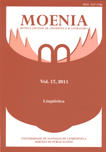El arabismo antroponímico femenino de transmisión literaria (Romanticismo y Modernismo)
Contenido principal del artículo
Resumen
Este artículo trata la variación y la riqueza del repertorio antroponímico gracias a las nuevas incorporaciones y las tendencias tradicional e innovadora a la hora de elegir un nombre para denominar a un recién nacido y la motivación de estas tendencias. Debido a que algunos nombres caen en desuso y otros antiguos se recuperan y se hacen frecuentes, hemos elegidos 6 nombres de pila de origen árabe y sus variantes para estudiar las causas de su conservación y presencia en el elenco onomástico. El análisis estadístico ha sido posible gracias a la ayuda de varias fuentes: las que ofrece el Instituto Nacional de Estadística (INE), y también el Corpus Diacrónico del español (CORDE), el Corpus de Referencia del Español Actual (CREA) y el Corpus del Nuevo diccionario histórico del español (CDH). Dos podrían ser los orígenes de la popularidad de estos nombres: por una parte la literatura, especialmente la novela romántica y el teatro lírico, y por otra la religión, pues a través de las advocaciones marianas cristianas se difundieron muchos de los antropónimos femeninos de origen árabe. Todo ello confirma la relación y el contacto entre las dos lenguas: árabe y español, así como la heterogeneidad y la presencia de arabismos femeninos en el repertorio antroponímico hispánico.


